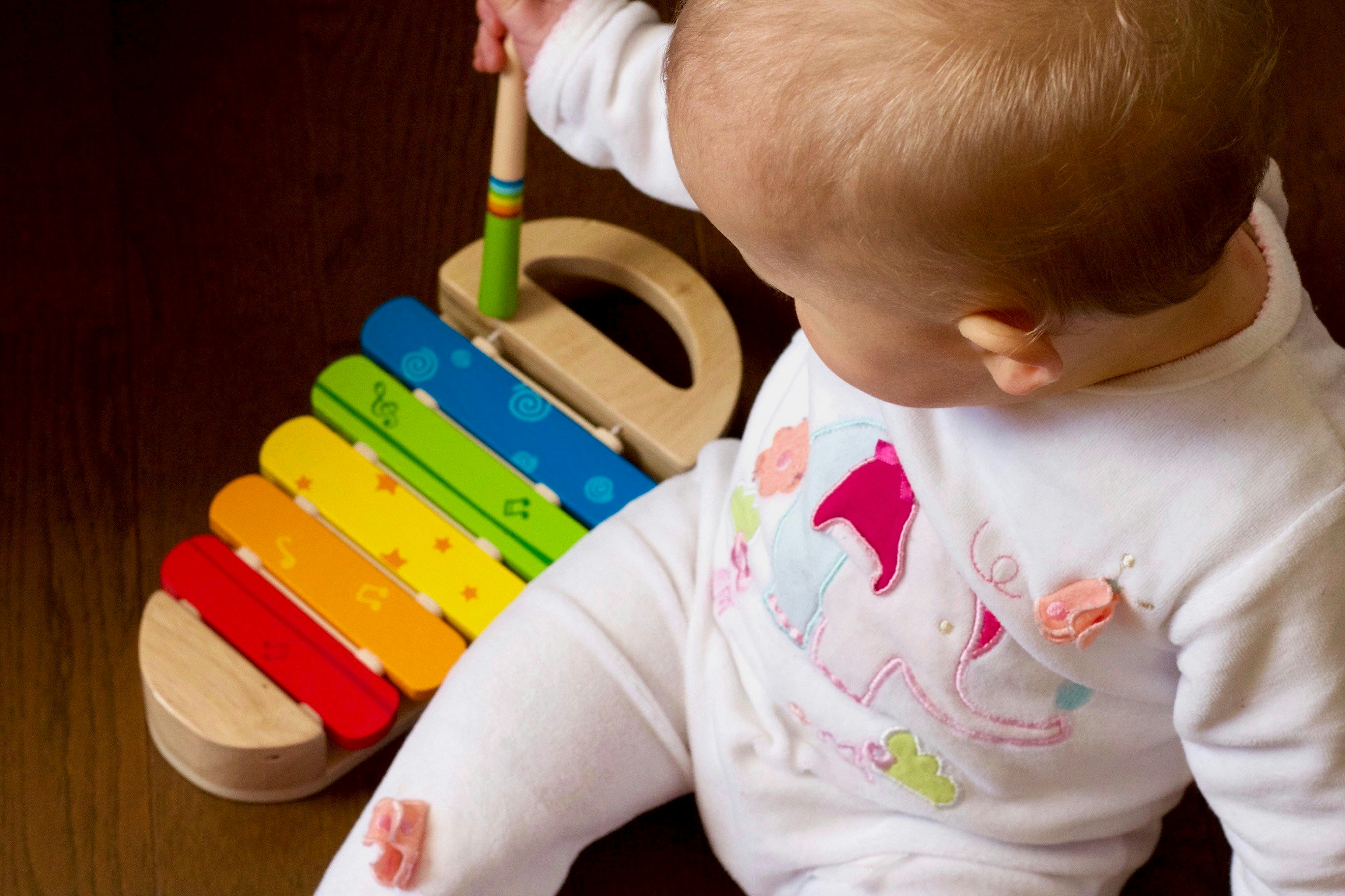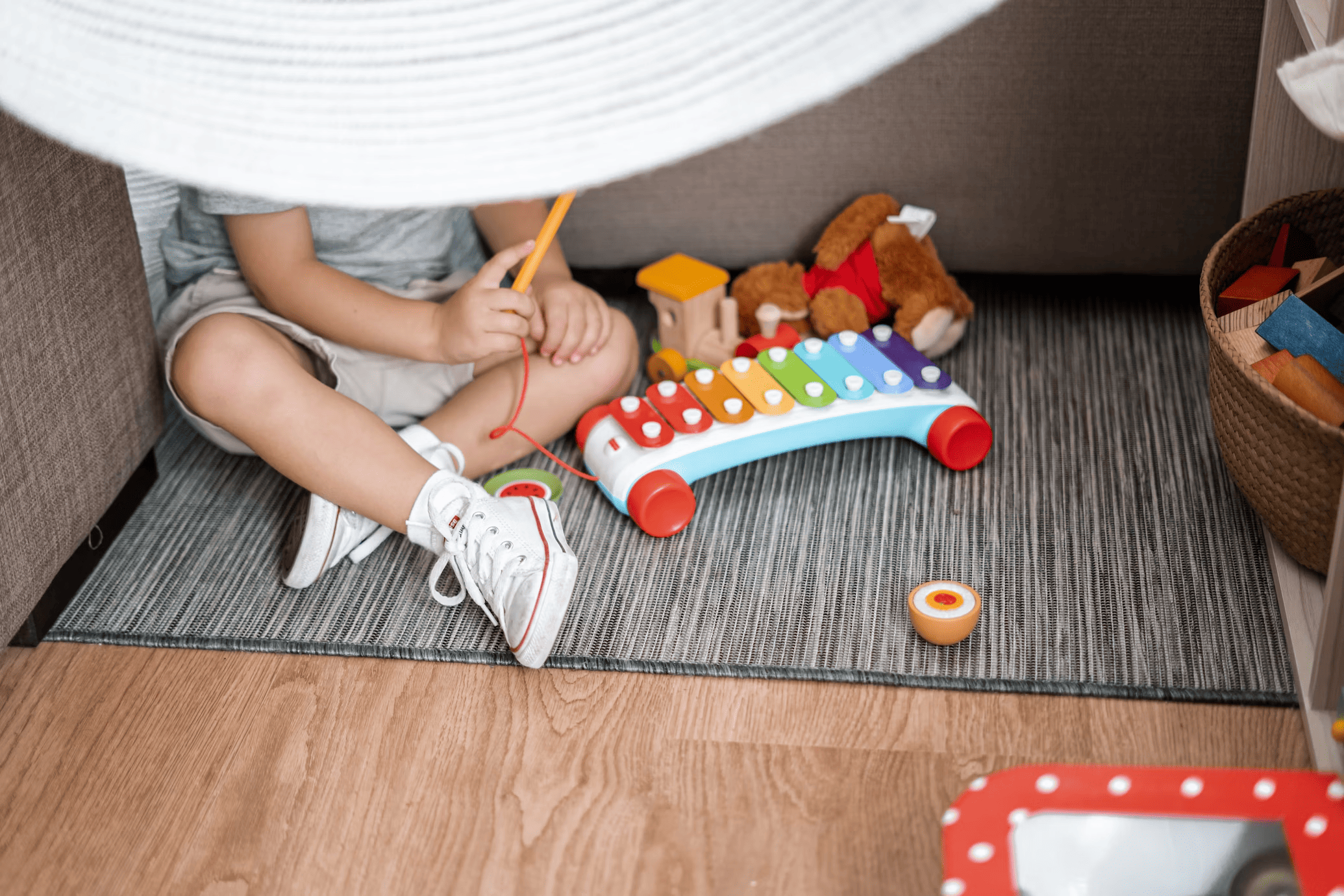Login
Join Free
The Power of Music and Sound Toys in Sensory Development
Sound is an essential element in a child's sensory development. From the first cries to the early stages of speech and beyond, children are constantly learning through auditory experiences. Music and sound toys, especially those that produce music or noise, have proven to be invaluable tools for nurturing these skills. These toys stimulate brain activity, help improve auditory processing, and contribute to a child's cognitive and physical growth.
Whether it's a toy that mimics animal sounds, a musical instrument, or a sound-activated toy, each one plays an integral role in promoting a variety of developmental milestones. In this blog, we'll delve into the role of sound and music in sensory development, explore different types of sound toys, and provide useful tips for parents and caregivers to make the most of these tools.
By the end, you'll have a better understanding of how to choose the right music and sound toys for your child's development, and how incorporating them into their playtime can be both fun and educational.
1. Understanding Sensory Development
Sensory development refers to how children learn to use their senses to explore and interact with the world around them. It begins right from birth, with babies initially using their sense of touch, taste, and sight. As they grow, the development of hearing and listening skills becomes equally important.
Sound plays a major role in this process. It helps children understand their environment, build recognition skills, and enhances memory. When a child hears a sound, whether it's a soft melody or the rhythm of a drum, their brain is activated to process the auditory input, creating new neural connections that contribute to cognitive development. Music, in particular, helps improve language skills, attention span, and even emotional regulation.
Incorporating sound toys into playtime supports this process, helping children develop a deeper understanding of their auditory world. These toys foster important skills such as listening, sound recognition, and the ability to distinguish between different pitches, tones, and rhythms. Sensory development through sound provides a foundation for other developmental areas, including problem-solving, motor skills, and social interaction.

2. The Role of Music and Sound in Sensory Development
Music and sound are powerful stimuli for young children. They can profoundly influence a child's emotional, cognitive, and motor development. When children engage with musical toys or sound-producing items, they are exposed to rhythmic patterns, melodies, and sometimes even speech.
Cognitive Benefits of Sound and Music:
- Memory and Attention: Listening to music or engaging with sound toys helps improve memory retention and attention span. Repetition of musical patterns allows children to anticipate and remember the sequence of notes or beats.
- Language Development: Music encourages the recognition of syllables, words, and sounds. Children begin to link sound with meaning, aiding in early language development. Songs, rhymes, and simple tunes promote listening and language comprehension.
- Problem-Solving and Critical Thinking: Sound toys often require children to figure out how to make a sound or respond to different noises, fostering critical thinking and decision-making skills.
Motor Development:
- Fine Motor Skills: Playing instruments like tambourines, maracas, or pianos helps improve hand-eye coordination. The act of pressing buttons or tapping rhythms encourages children to develop muscle control.
- Gross Motor Skills: Sound toys that require physical movement, such as dancing to music or shaking an instrument, help develop large muscle groups, contributing to better balance and coordination.
Emotional Benefits:
- Sound can also have a calming or stimulating effect, helping children regulate their emotions. For instance, soothing lullabies can calm a distressed child, while upbeat tunes can energize a tired one.

3. Types of Music and Sound Toys
There are many different types of sound toys available, each designed to foster specific developmental benefits. Some of the most popular types include:
-
Musical Instruments for Toddlers: Simple instruments like xylophones, tambourines, and drums help children engage with music while improving motor coordination and rhythm recognition. They also introduce basic concepts of cause and effect, as children discover how to create sound.
-
Sound-Activated Toys: Toys that respond to a child's voice or touch are great for stimulating auditory skills. These toys might play a tune when touched or make animal noises when activated. They are excellent for encouraging interaction and engagement.
-
Interactive Sound Books: Sound books are a fun and educational way to introduce children to stories and songs. When a child presses a button or turns a page, they hear the corresponding sound or music. This encourages both auditory and visual engagement, promoting literacy and listening skills.
-
Musical Activity Centers: These toys often combine various sound-producing elements like buttons, keys, and switches. They offer a multifaceted experience that fosters cognitive development, sensory engagement, and motor skills.
For retailers, if you're looking to incorporate sound-based toys into your product offerings, consider exploring our comprehensive selection of sound toys for children. We provide a wide range of musical and sound-producing toys designed to foster sensory and cognitive development. Check out our full collection of sound toys here.
4. Tips for Parents and Caregivers
Music and sound toys can be incredibly beneficial, but selecting the right ones for your child requires some thought. Here are some tips for parents and caregivers:
-
Choose Age-Appropriate Toys: Ensure the sound toys are suitable for your child's age and developmental stage. For younger children, look for toys with soft sounds and large, easy-to-handle buttons. For older children, consider musical instruments or interactive sound books.
-
Encourage Active Play: Encourage your child to play with sound toys in an active way. For example, ask them to tap a drum in rhythm or mimic the sounds they hear.
-
Limit Noise Levels: While sound toys can be fun, excessive noise can be overwhelming. Choose toys with adjustable volume settings to protect your child's hearing.
-
Engage in Play Together: Play alongside your child to model how to use sound toys, helping them explore sounds and interact with the toy. This also strengthens the bond between you and your child.
-
Diversify Sound Exposure: Expose your child to a variety of sounds, from animal noises to musical instruments. This helps them build a broad range of auditory recognition skills.
Conclusion
Music and sound toys are more than just playthings—they are powerful tools for sensory development, enhancing cognitive, motor, and emotional skills in children. From building auditory processing abilities to improving motor coordination, these toys play an essential role in shaping a child's early learning experiences.
If you're a retailer or an educator looking to stock up on high-quality sound-based toys, zhorya.com offers a wide selection at wholesale prices. Whether you need musical instruments, sound-activated toys, or interactive activity centers, we have something for every developmental stage.
Start building your sensory toy inventory today and help children grow through the power of sound!

 Русский язык
Русский язык 中文
中文